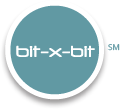By Beth Hughes, Esq.
With the dramatic rise in document review costs as more and more electronic data is created in the ordinary course of business, technology is increasingly necessary to manage the process and associated expenses. The use of such technology, including technology assisted review (TAR) is becoming more commonplace in the discovery process, no matter the size of the case or investigation. Not only can TAR quickly identify potentially relevant documents and materials, it can also be used to speed up and enhance the efficacy of the privilege review, giving clients and counsel significant peace of mind and resulting cost savings.
What is Technology-Assisted Review (TAR)? There are two types of TAR, commonly referred to as TAR 1.0 and TAR 2.0. TAR 1.0, the original predictive coding workflow, typically requires a “seed set” – or group of documents reviewed by a subject-matter expert (SME), usually the managing attorney on the matter. It requires a good bit of front-end work by the SME, including reviewing the seed set to train the system, testing the results, and repeating until the desired result is achieved. For this reason, it is no longer commonly employed.
Continuous active learning (CAL) – often referred to as TAR 2.0 – requires much less front-end time and input. The system is trained and updated as review progresses. No initial seed set is required, review can just begin, and the system will update and rank the documents on likely responsiveness as review continues. The more likely responsive documents are sent to the top of the review pile. Once the responsiveness drastically falls off, you can choose to end your review, confident that you have reviewed almost all of the responsive material. Sampling of the highly and lowly ranked material not tagged as responsive during review can also help validate the set and insure defensibility of the review process.
That’s how TAR is used to identify relevant material to be produced, or identify relevant material received in an opposing production, but that’s not the only way we can use this technology to benefit clients, saving both time and money.
Privilege Identification and TAR Workflow
With the typical matter, first level review is complete, the responsive material has been identified, and the privilege has been flagged along the way. At this point in the process, some quality control (QC) is usually employed by counsel. Traditional QC of privilege material involves using search terms and duplicate document analysis. Those are useful tools, but CAL can help at this stage, as well. Using the documents coded for privilege during the initial review, we can train the system to identify privilege material and zero in on those that might otherwise have been missed during or inadvertently placed in the production queue. It is a very easy, effective step that can be added to any review plan for minimal cost.
Recently, bit-x-bit’s eDiscovery team facilitated a review that utilized this strategy. After approximately 100,000 files were identified as relevant, we ran the privilege terms agreed to by counsel across the entire potential production set. The privilege terms identified more than two thousand potentially privileged documents that required QC for privilege. While attempting to focus the terms can help achieve a more manageable set, the accuracy might not be quite as reliable.
While the review team performed QC with its traditional method, we used the privilege determinations made by the review team to train a second CAL set as an added layer of reliability and security. The system identified an additional 200 documents that were in the production queue that were recognized as likely to be privileged. About 60 of those documents were ultimately removed from the production set as privileged. This strategy helped provide an added measure of comfort to the attorneys responsible for the production that all privileged material had been identified.
Both document review platforms that bit-x-bit offers (Relativity and Insight) can provide this workflow to you. Let us help you develop a defensible ESI protocol and review plan to help manage your costs while also providing a higher level of assurance in the accuracy of your privilege reviews.

